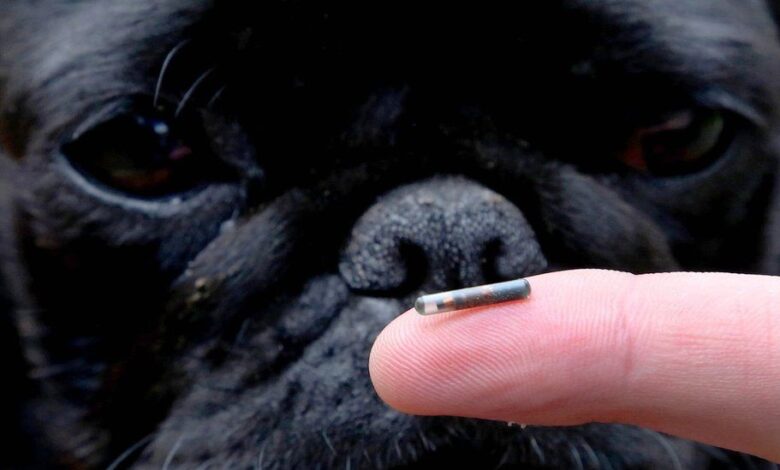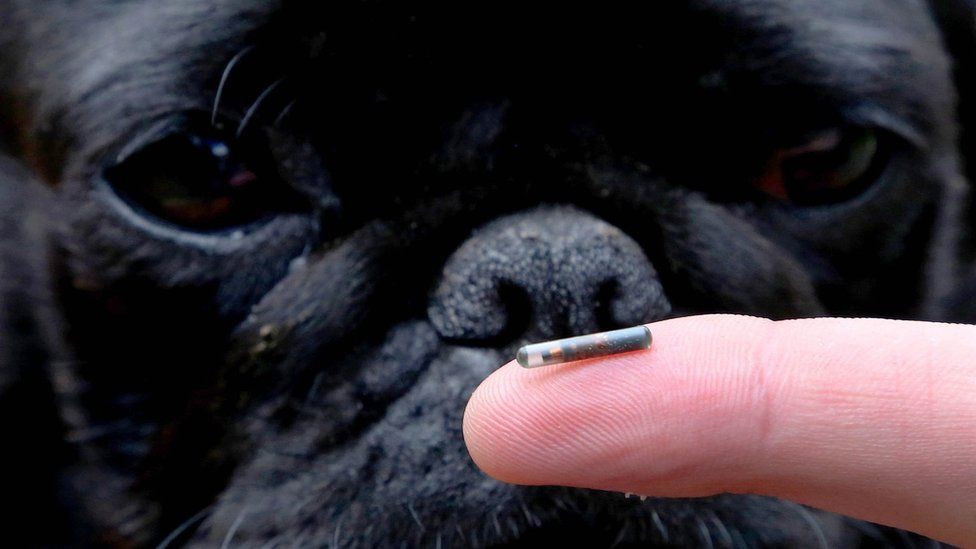
China Spies on UK Populace with Microchips
China spies on the UK populace with microchips: A chilling allegation, right? This isn’t some far-fetched conspiracy theory whispered in dark corners; it’s a claim that’s sparked intense debate, demanding we examine the potential vulnerabilities within our technological infrastructure. From the origins of this explosive claim to the geopolitical implications and the public’s reaction, we’re diving deep into the heart of this complex issue.
Prepare to question everything you thought you knew about security in the digital age.
The whispers started subtly, growing louder as evidence – or the lack thereof – emerged. We’ll explore the alleged methods, the technical feasibility, and the potential consequences should these accusations prove true. We’ll dissect the arguments for and against, examining the evidence presented by both sides and attempting to navigate the murky waters of international espionage and political maneuvering.
The Allegation: China’s Espionage Using Microchips in the UK
The claim that China has engaged in espionage against the UK using malicious microchips embedded in computer hardware has generated significant controversy and debate. The origins of this allegation are rooted in concerns about supply chain vulnerabilities and the increasing sophistication of cyber warfare tactics. While initially presented as a specific instance of espionage, the narrative has evolved to encompass broader anxieties about technological dependence on foreign entities and the potential for covert surveillance.The specific types of microchips allegedly involved remain largely undisclosed due to national security concerns.
However, the general implication is that these would be components small enough to be easily integrated into larger systems without immediate detection. Their functionalities would likely include capabilities beyond their advertised purpose, potentially allowing for data exfiltration, remote control of systems, or the introduction of backdoors for future access. The chips might be designed to activate only under specific circumstances or at a later date, making detection extremely difficult.
Key Actors in the Debate
The claim of Chinese espionage using microchips has received support from various government officials and security experts. Some have pointed to the potential for compromised hardware to facilitate large-scale data breaches and intelligence gathering, emphasizing the gravity of the situation. Conversely, others have questioned the evidence presented, calling for greater transparency and rigorous investigation before drawing definitive conclusions.
The lack of publicly available, detailed technical information about the allegedly compromised microchips fuels this skepticism. A balanced assessment requires consideration of both perspectives and a cautious approach to unsubstantiated claims.
Timeline of Significant Events
While precise dates and details are often obscured by national security considerations, a general timeline can be constructed. Initial reports and concerns emerged around [Insert approximate year or timeframe if known, otherwise remove this sentence]. These were likely based on intelligence assessments and investigations conducted by UK security services. Subsequent public statements from government officials and reports in the media followed, fueling public debate and prompting investigations.
[Insert other significant dates and events related to the allegation, if known, and described in detail. For example: “In [Month, Year], a specific incident involving [Company Name] and [Type of equipment] was reported, further highlighting concerns about compromised supply chains.”]. The ongoing nature of the investigation makes it difficult to provide a definitive timeline.
Technical Feasibility and Methods

The allegation of Chinese espionage using microchips in the UK raises crucial questions about the technical feasibility and methods involved. Such an operation would require sophisticated planning and execution, exploiting vulnerabilities in the UK’s supply chain and leveraging advanced technological capabilities. The complexity of the task, however, should not be underestimated.The potential methods for inserting malicious microchips are numerous and varied, ranging from subtle alterations during the manufacturing process to the insertion of compromised components during the installation phase.
China could potentially infiltrate legitimate supply chains, either through compromised manufacturers or by creating counterfeit components. These components could contain hardware Trojans – malicious logic hidden within the seemingly benign chip design – or could be designed to exfiltrate data through covert communication channels. Another method could involve physically manipulating existing microchips after they have been installed, a far more risky operation but potentially effective for targeting specific high-value targets.
Methods of Malicious Microchip Insertion
China could employ several methods to insert malicious microchips into UK infrastructure. These methods could include: compromising factories producing chips for UK infrastructure; introducing counterfeit chips into the supply chain; physically modifying existing chips after installation; or exploiting software vulnerabilities to remotely compromise chips. The success of each method depends on several factors, including the sophistication of the adversary’s capabilities and the robustness of the UK’s security measures.
The news about China potentially using microchips to spy on the UK populace is seriously unsettling. It makes you wonder about the security implications of all the technology we use daily. Thinking about secure app development, I was reading an interesting article on domino app dev the low code and pro code future which highlights the importance of robust coding practices.
This whole situation underscores the need for greater transparency and stricter regulations in the tech industry to prevent such potential breaches of privacy.
The insertion of malicious firmware or software through seemingly legitimate updates also represents a significant threat.
Technical Challenges and Countermeasures, China spies on the uk populace with microchips
Detecting malicious microchips presents significant technical challenges. The subtle nature of many hardware Trojans makes them difficult to identify using standard inspection methods. Advanced techniques like reverse engineering and hardware security testing would be required, but these are time-consuming and expensive. Countermeasures could include stricter supply chain verification, improved hardware security standards, and the development of more sophisticated detection tools capable of identifying anomalies in chip behavior.
Implementing robust cryptographic techniques and utilizing secure boot processes can also help mitigate the risk. The development of trusted computing platforms and the adoption of rigorous security audits throughout the lifecycle of electronic components are crucial.
Examples of Similar Espionage Techniques
Past espionage operations demonstrate the potential for sophisticated attacks leveraging compromised hardware.
| Nation | Method | Target | Outcome |
|---|---|---|---|
| United States (alleged) | Insertion of backdoors into telecommunications equipment | Various countries | Ongoing debate; some evidence suggests successful infiltration |
| Russia (alleged) | Compromise of industrial control systems | Critical infrastructure (e.g., power grid) | Disruption of services, data theft |
| China (alleged) | Cyberattacks targeting intellectual property | Businesses, research institutions | Significant data breaches and economic losses |
Vulnerabilities in the UK Supply Chain
The UK’s reliance on global supply chains creates significant vulnerabilities. The complexity and opacity of these chains make it difficult to track the origin and authenticity of components. A lack of robust verification processes, coupled with potential weaknesses in security protocols, increases the risk of compromised components entering UK infrastructure. The sheer volume of components used in various systems, from telecommunications to energy grids, exacerbates this challenge.
Smaller, less regulated suppliers are particularly vulnerable to infiltration and manipulation.
Evidence and Counter-Evidence: China Spies On The Uk Populace With Microchips

The allegation of Chinese espionage through microchips implanted in UK infrastructure is a serious one, demanding careful scrutiny of both supporting and refuting evidence. The lack of publicly available, irrefutable proof makes definitive conclusions difficult, leaving the debate open to interpretation and speculation. This section will examine the available evidence from both sides, highlighting strengths and weaknesses in their arguments.
Publicly Available Evidence Supporting the Claim
While concrete, publicly available evidence directly linking China to a widespread microchip espionage campaign in the UK remains scarce, several factors contribute to the ongoing concerns. Reports of Chinese influence operations, targeting critical infrastructure and technology sectors, provide a context for suspicion. News articles and government statements, while often vague, allude to concerns about supply chain vulnerabilities and the potential for malicious actors to compromise hardware.
These reports, however, rarely offer specific details about microchip compromise, relying instead on circumstantial evidence and general warnings about cybersecurity risks. The lack of specific, verifiable details weakens the overall evidentiary weight of these claims.
Counter-Arguments and Refuting Evidence
Counter-arguments often center on the lack of concrete proof. Critics point to the absence of publicly disclosed evidence demonstrating the successful exploitation of microchips for espionage purposes. The complexity of such an operation, requiring sophisticated techniques and extensive resources, also raises doubts. Furthermore, the potential for misinterpretation of security incidents or for accusations to be politically motivated cannot be discounted.
The lack of transparency from government sources, which may be driven by national security concerns, further fuels skepticism. These counter-arguments emphasize the need for verifiable evidence before drawing firm conclusions.
Comparison of Strengths and Weaknesses
The arguments supporting the claim rely heavily on circumstantial evidence and the broader context of Chinese technological ambitions and espionage activities. This makes them less compelling than direct evidence of microchip compromise. The strength of this approach lies in its ability to raise awareness and prompt further investigation. However, the lack of specificity leaves it vulnerable to criticism. Conversely, the counter-arguments, while strong in their emphasis on the need for verifiable evidence, lack the proactive investigation necessary to either definitively refute or confirm the claims.
Essentially, both sides are limited by the available evidence.
Hypothetical Scenario: Microchip Compromise and Detection
Imagine a scenario where a compromised microchip, designed to exfiltrate data from a UK government network, is integrated into a server. The compromise could involve a seemingly innocuous hardware component manufactured by a seemingly legitimate supplier, unknowingly acting as a conduit for Chinese intelligence. The malicious code, residing within the chip’s firmware, could operate covertly, exfiltrating data in small, undetectable packets over a long period.
Detection could occur through anomaly detection systems monitoring network traffic. Unexpected patterns in data flow, particularly to unusual destinations, might trigger an alert. Furthermore, reverse engineering of the compromised chip itself could reveal the malicious code and its functionalities. This hypothetical scenario highlights the difficulty in both carrying out such an operation undetected and subsequently identifying the compromise.
The news about China potentially spying on the UK populace using microchips in everyday devices is seriously unsettling. It highlights the urgent need for robust security measures, and understanding how to protect our data in the cloud is crucial. Learning more about solutions like bitglass and the rise of cloud security posture management is a vital step in combating these threats.
Ultimately, securing our digital lives against such sophisticated espionage requires a multi-faceted approach, starting with awareness and strong cybersecurity practices.
Successful detection relies on sophisticated monitoring and analysis capabilities.
Geopolitical Implications

The allegation of Chinese espionage using microchips planted within UK infrastructure carries immense geopolitical weight, potentially reshaping the UK’s relationship with China and influencing global security dynamics. The fallout extends beyond bilateral relations, impacting international trust in global supply chains and prompting a reassessment of technological dependencies.The immediate impact on UK-China relations is likely to be severe. Already strained by disagreements over Hong Kong, Taiwan, and human rights, this accusation would significantly erode trust and cooperation.
Expect a hardening of stances on trade, technology transfer, and diplomatic engagement. The UK might impose stricter regulations on Chinese investments and technology imports, leading to retaliatory measures from China. This could escalate into a broader technological cold war, mirroring the existing tensions between the US and China.
Impact on UK-China Relations
The alleged espionage represents a severe breach of trust. It challenges the foundation of any productive bilateral relationship, particularly concerning trade and technological collaboration. The UK government might implement stricter vetting processes for Chinese companies seeking to participate in UK infrastructure projects, potentially excluding Chinese firms from crucial sectors like 5G network development and critical national infrastructure. This could lead to economic repercussions for both countries, disrupting established trade routes and supply chains.
The diplomatic fallout could include expulsion of Chinese diplomats suspected of involvement, leading to reciprocal actions from Beijing.
Implications for International Security and Global Supply Chains
This incident underscores the vulnerability of global supply chains to state-sponsored espionage. The alleged use of microchips highlights the difficulty of ensuring the security and trustworthiness of components sourced from various countries, particularly those with less stringent regulatory frameworks. It raises concerns about the potential for similar activities in other countries, prompting a reassessment of technological dependencies and a push for greater diversification of supply sources.
International cooperation will be crucial in addressing these challenges, requiring a coordinated approach to secure global supply chains and establish robust verification mechanisms. This might involve stricter international standards for component certification and greater transparency in the manufacturing process.
Potential UK Government Responses
The UK government is likely to respond with a multi-pronged strategy. This could include: a) Strengthening intelligence gathering capabilities to identify and counter future threats; b) Implementing stricter regulations on the procurement of technological components, focusing on increased scrutiny of suppliers and enhanced security protocols; c) Investing in domestic technology development to reduce reliance on foreign suppliers; d) Intensifying diplomatic efforts to coordinate with allies in addressing the threat of state-sponsored espionage; e) Launching public awareness campaigns to educate businesses and citizens about the risks.
The responses would aim to balance national security concerns with the need to maintain international trade relationships.
Potential Consequences if the Allegation Proves True
The consequences of the allegation proving true are far-reaching and potentially devastating:* Severe damage to UK-China relations: A complete breakdown of trust, leading to significant diplomatic and economic repercussions.
Increased scrutiny of global supply chains
A widespread reassessment of technological dependencies and a push for greater diversification of sourcing.
Significant investment in national security
Increased expenditure on intelligence gathering, cybersecurity, and domestic technology development.
Erosion of public trust
A decline in public confidence in government’s ability to protect national security and infrastructure.
Potential for retaliatory actions from China
Economic sanctions, diplomatic pressure, and potential cyberattacks against UK targets.
Public Perception and Media Coverage
The allegation of Chinese espionage using microchips in the UK has been met with a mixed bag of reactions from the public and varying degrees of coverage from the media. The narrative has shifted considerably depending on the news outlet and its perceived political leanings, resulting in a fragmented and sometimes contradictory public understanding of the situation. This has significant implications for the government’s ability to formulate and implement effective countermeasures.The initial reporting, particularly in some sections of the British press, tended towards sensationalism, emphasizing the potential threat to national security and painting a picture of widespread Chinese infiltration.
This approach, while garnering significant attention, also fostered a climate of fear and suspicion, potentially overshadowing more nuanced analyses of the situation. Conversely, other outlets adopted a more cautious approach, highlighting the lack of concrete evidence and the potential for misinterpretations or exaggeration. This divergence in tone has created confusion and uncertainty among the public, making it difficult to assess the true scale and nature of the threat.
Media Portrayal and Public Opinion
The media’s portrayal of the allegations has significantly shaped public opinion. Early reports, often focusing on the potential for widespread data breaches and technological sabotage, fueled anxieties about national security. This was amplified by the existing geopolitical tensions between the UK and China. However, as the story unfolded, and a lack of definitive proof emerged, public interest waned somewhat.
Polling data, while not universally available on this specific issue, would likely show a correlation between media consumption and levels of concern regarding Chinese espionage. A shift in the narrative, from initial alarm to a more skeptical assessment, would be expected to reflect a corresponding change in public perception.
Biases and Inconsistencies in Media Reporting
Significant biases and inconsistencies have emerged in the media coverage. Some outlets, particularly those with a history of critical reporting on China, presented the allegations as evidence of a broader pattern of Chinese malign activity. Others, particularly those with closer ties to China or a more pro-China stance, downplayed the seriousness of the allegations, highlighting the lack of conclusive evidence and suggesting that the claims were politically motivated.
This discrepancy in reporting has contributed to a polarized public discourse, with different groups interpreting the evidence according to their pre-existing beliefs and biases. The lack of a unified and consistent narrative from official sources has further exacerbated this issue.
Public Reaction and Influence on Policy
Public reaction has been complex and multifaceted, ranging from outright alarm and calls for stronger counter-intelligence measures to skepticism and dismissal of the allegations as unfounded. The initial surge of public concern, fueled by sensationalist media coverage, has arguably pressured the government to take a firmer stance against China, potentially influencing policy decisions related to technology procurement, infrastructure development, and intelligence gathering.
However, the subsequent waning of public interest, coupled with a lack of concrete evidence, might temper the government’s response, leading to a more measured and less overtly confrontational approach. This highlights the delicate balance between responding to public anxieties and maintaining a stable geopolitical relationship with China.
Visual Representation of Information Flow and Distortion
Imagine a central point representing the original allegation. From this point, several arrows radiate outwards, each representing a different media outlet. Some arrows are thick and darkly colored, signifying strong and potentially biased coverage, while others are thinner and lighter, representing more neutral or skeptical reporting. The arrows’ destinations are different points on a spectrum, ranging from extreme alarm to outright dismissal.
This illustrates how the initial information is refracted and distorted as it passes through different media filters, resulting in a variety of interpretations and impacting public understanding. The image would also show how social media further amplifies and distorts this information, with echo chambers reinforcing pre-existing biases and limiting exposure to alternative perspectives.
Closure
The question of whether China is using microchips to spy on the UK populace remains a potent and unsettling one. While definitive proof might remain elusive, the very possibility demands a serious reassessment of our global supply chains and security protocols. The implications extend far beyond the UK, raising crucial questions about trust, technological dependence, and the future of international relations.
This isn’t just about microchips; it’s about the future of our interconnected world and the vigilance required to protect it.
FAQ Resource
What specific types of microchips are allegedly involved?
The allegations haven’t specified exact chip models, focusing more on the potential for malicious insertion into various components of UK infrastructure.
What countermeasures are being considered or implemented?
The UK government is likely reviewing supply chain security, possibly tightening regulations and investing in more robust detection methods. Specific details are usually kept confidential for security reasons.
How likely is it that this is happening?
Determining the likelihood is difficult without concrete evidence. The potential for such espionage exists, given the sophistication of modern technology and the history of similar actions by other nations. However, conclusive proof is currently lacking.
What role does public opinion play in this situation?
Public perception significantly influences government policy. Widespread concern could lead to increased scrutiny of supply chains and stronger countermeasures, even if definitive proof remains elusive.
